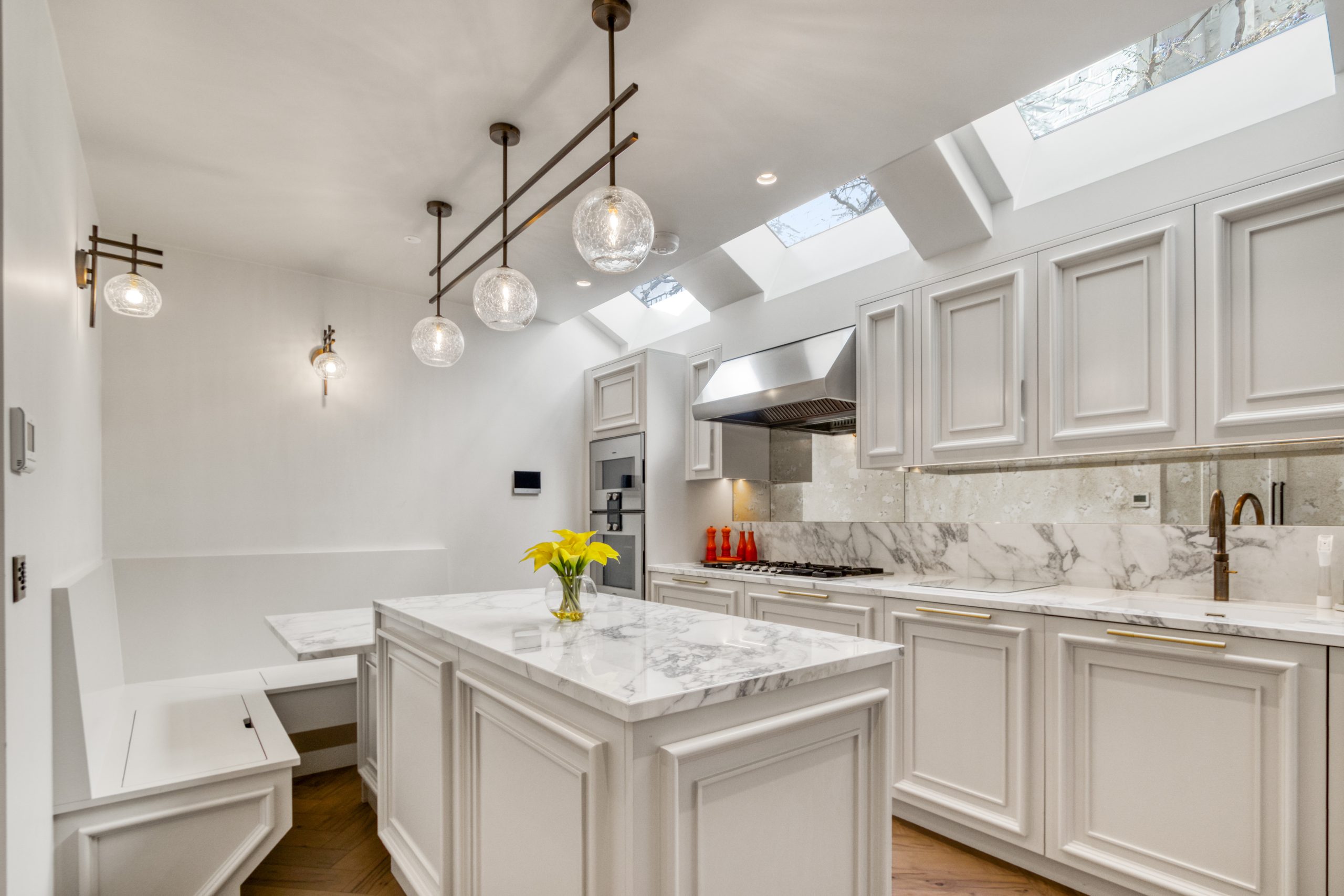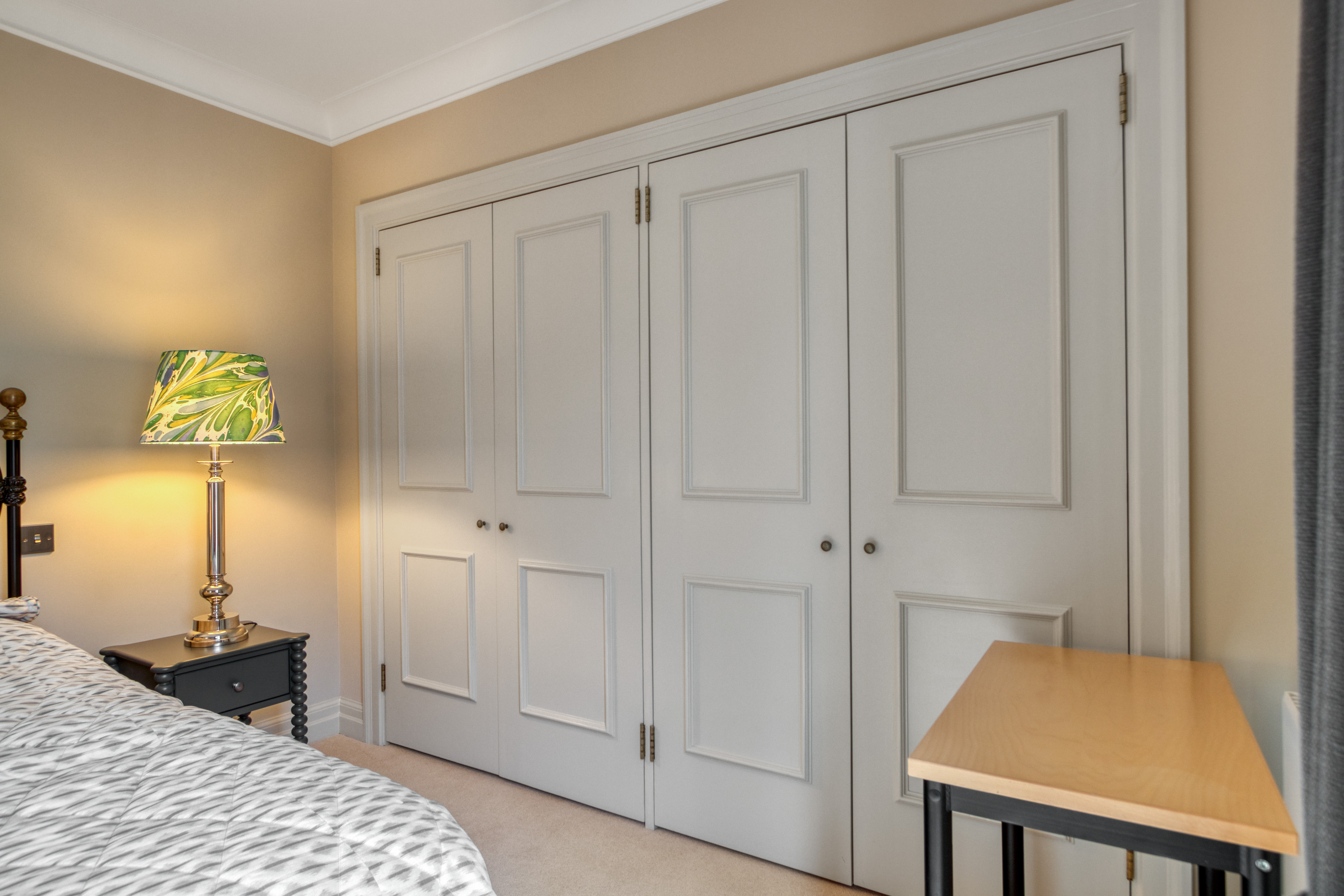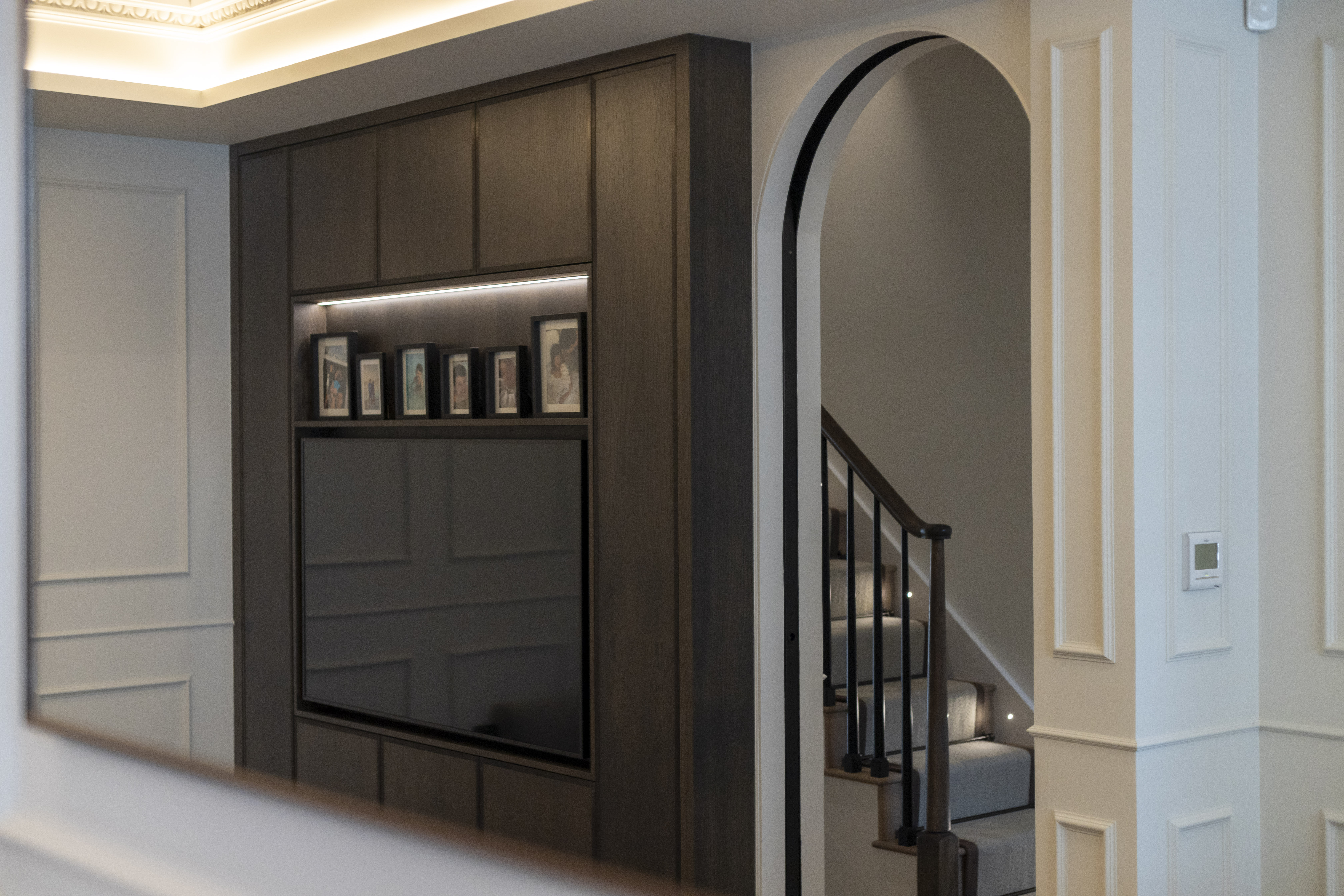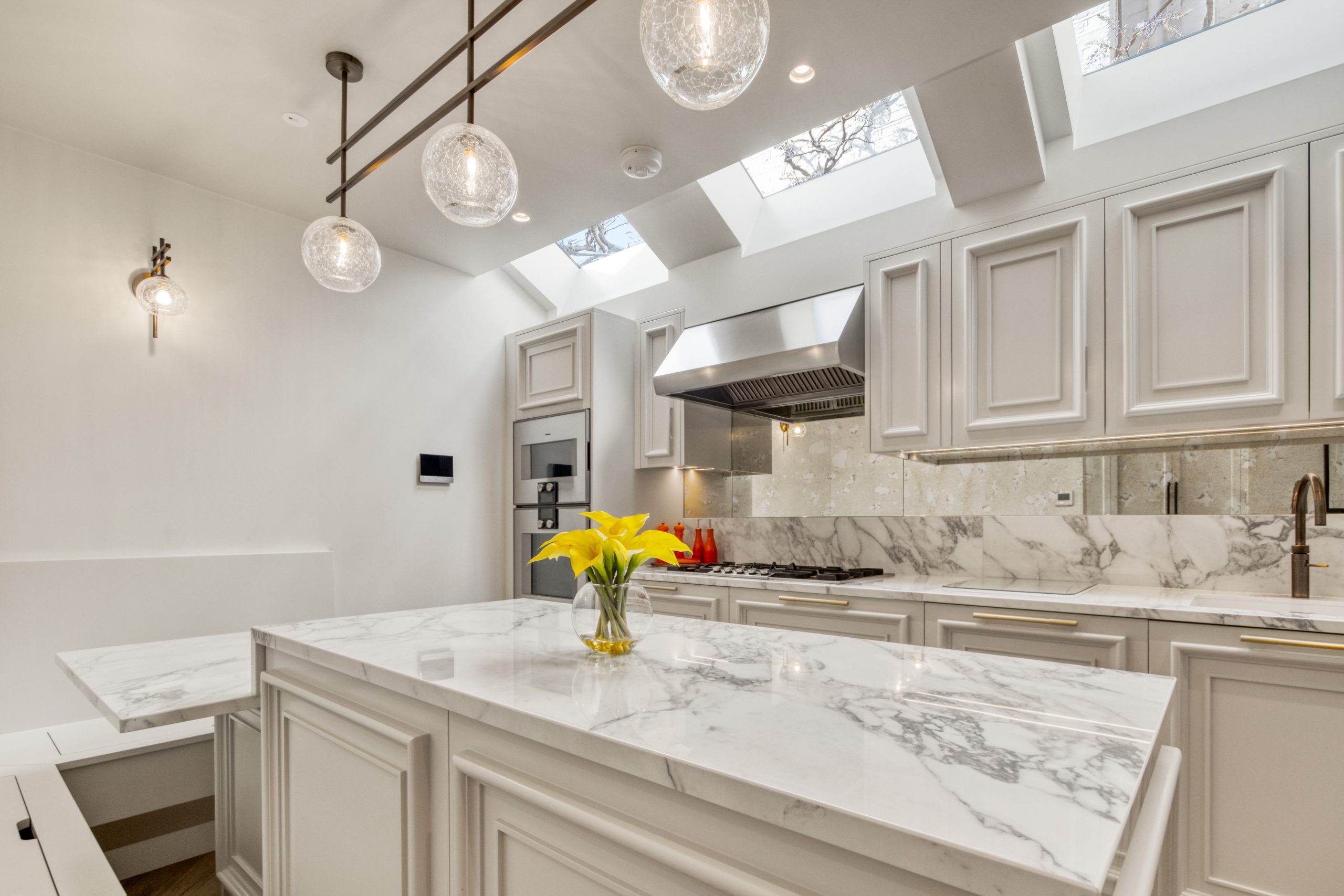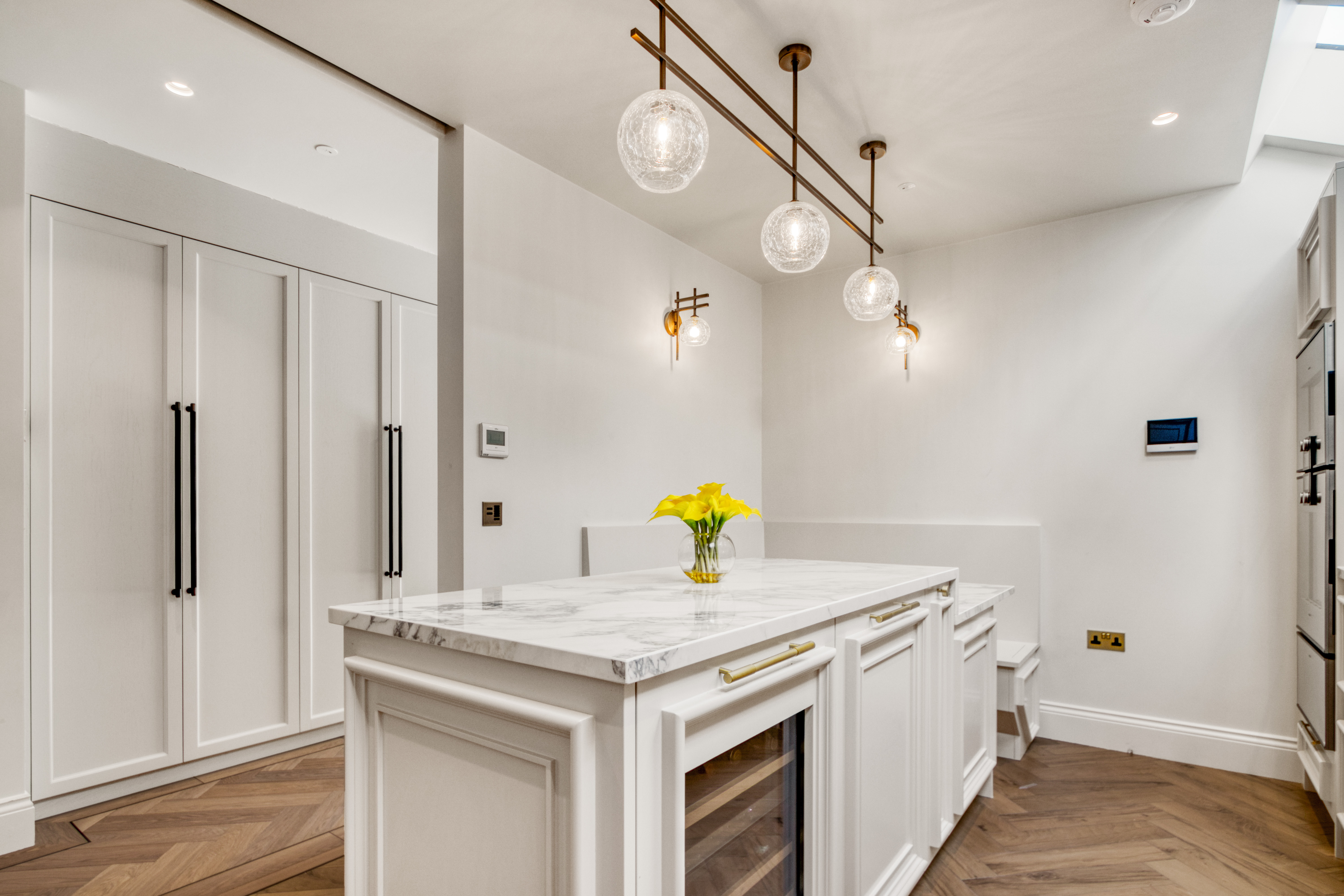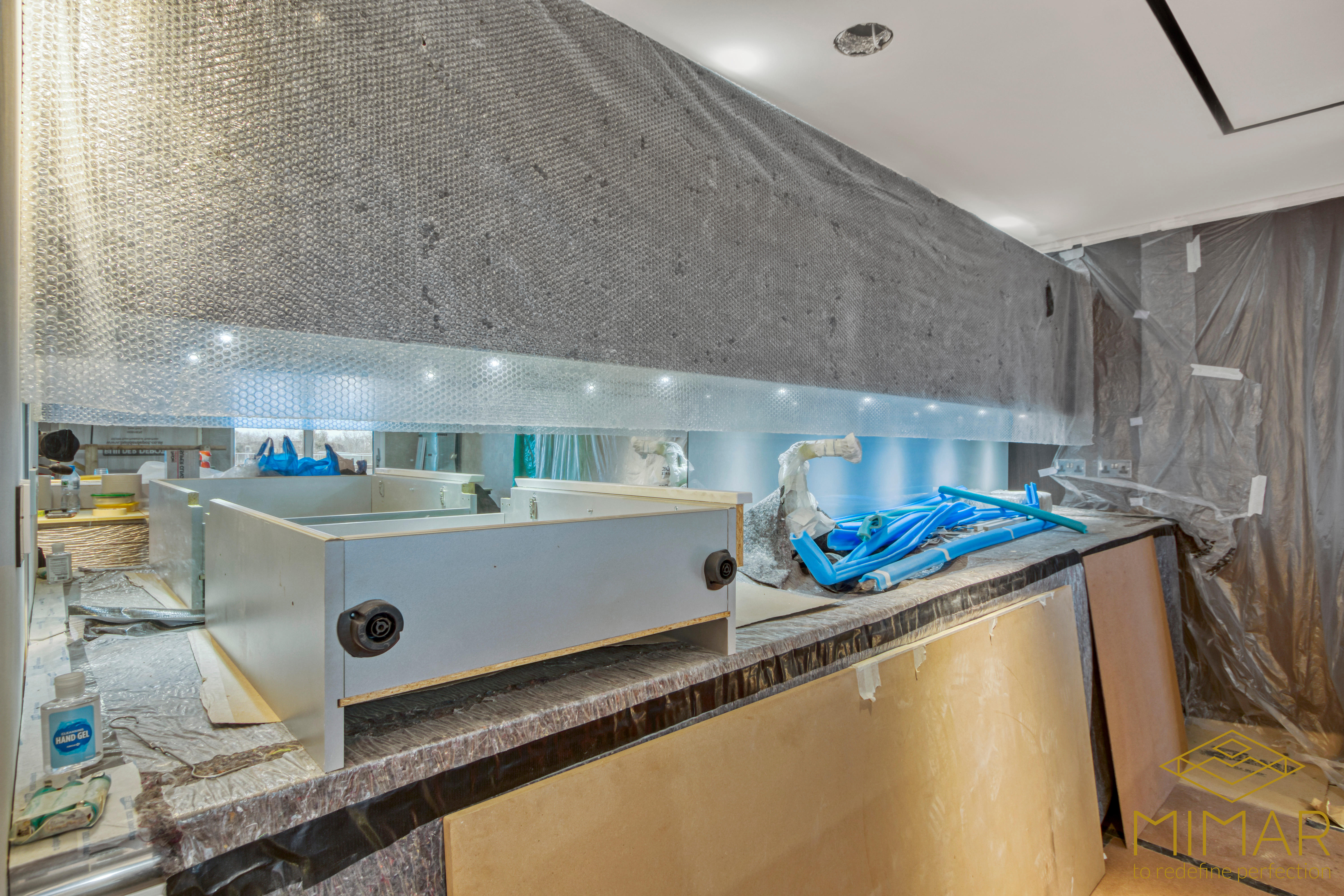Table of Contents
- Introduction
- Initial Planning Considerations
- Factors That Influence Kitchen Remodel Price
- Understanding Kitchen Renovation Terminology and Costs
- Typical Kitchen Remodel Cost Breakdown in London
- Developing a Realistic Budget
- Obtaining and Evaluating Quotes
- Prioritizing Your Spending
- Managing Kitchen Renovation Costs
- Conclusion
Introduction: Understanding the Value and Cost of Kitchen Remodels
Kitchen remodeling stands as one of the most impactful home improvement projects, transforming not just the heart of your home but potentially increasing your property’s market value. However, kitchen remodel cost is often the primary consideration that shapes the entire renovation journey. Mid-range kitchen renovations in London typically average between £25,000 and £35,000, while costs across the broader UK tend to be somewhat lower. Without a clear understanding of these costs from the outset, homeowners risk budget overruns, design compromises, and renovation regrets. If you want to start with tips and expert advice on revitalizing your space, check out these kitchen remodeling tips for London.
This comprehensive guide will walk you through everything you need to know about kitchen refurbishment cost planning – from initial considerations to detailed breakdowns, budgeting strategies, and cost management techniques. Whether you’re contemplating a budget kitchen refresh or a high-end transformation, understanding the financial landscape is essential for achieving the kitchen of your dreams without unnecessary financial stress.
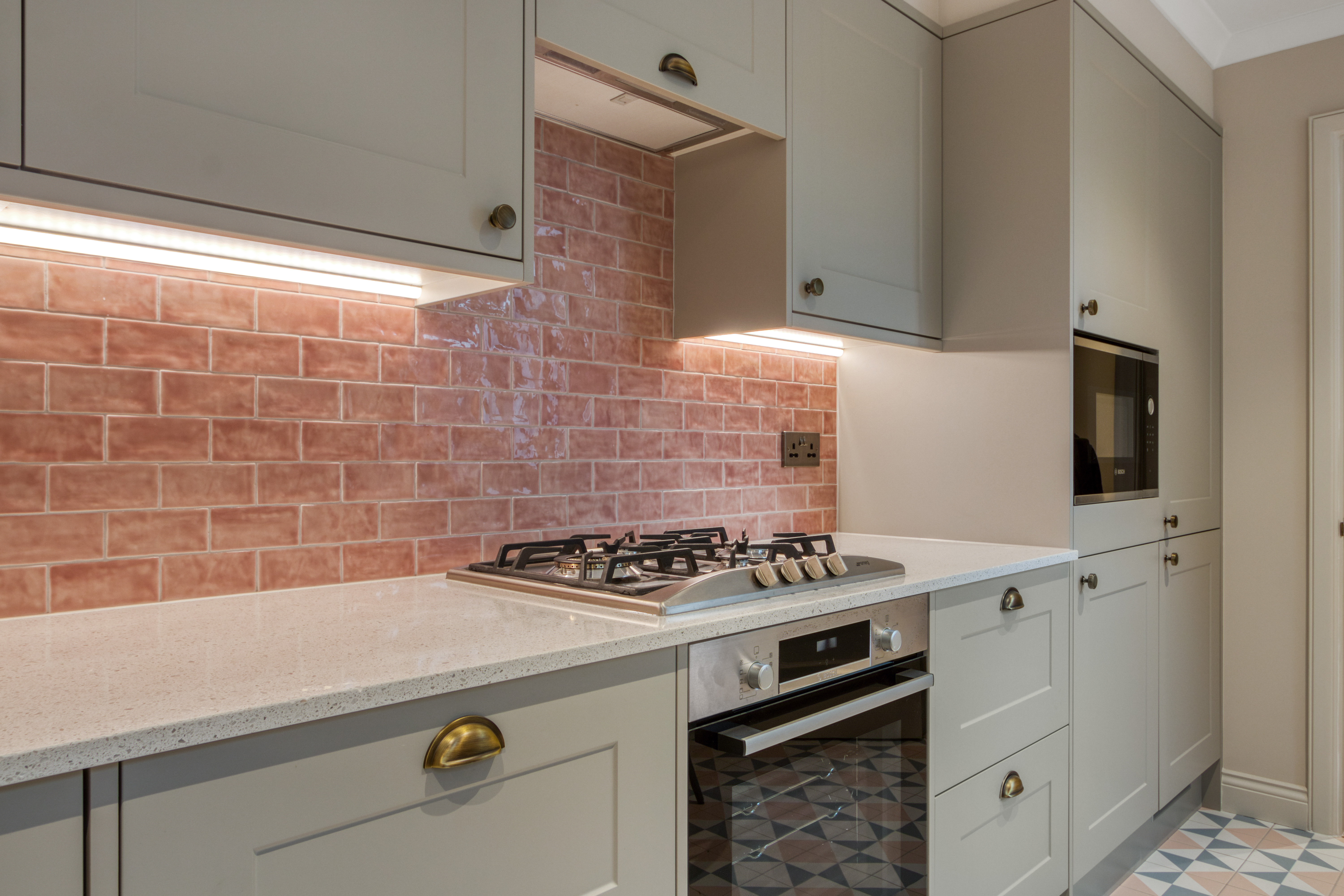
Why Cost Planning Matters
Accurate cost planning allows you to set realistic expectations, make informed design decisions, and avoid the common pitfall of mid-project budget crises that can lead to unsatisfactory compromises.
Initial Planning Considerations for Your Kitchen Remodel
Before diving into specific costs, establishing a clear vision and scope for your kitchen remodel creates the foundation for accurate budgeting. Here are the essential first steps:
Define Your Goals and Vision
What do you want to achieve with your kitchen renovation? Are you looking to create a more functional workspace, update the aesthetic, increase storage, improve energy efficiency, or enhance your home’s value for resale? Having clear goals helps determine which elements deserve priority investment and where you might be willing to compromise. For those inspired by custom and truly individual spaces, exploring the benefits of handmade and bespoke kitchens can be a meaningful avenue to achieve enduring value and style.
Assess Your Current Kitchen
Take an honest inventory of what works and what doesn’t in your current kitchen. Consider workflow issues, storage limitations, lighting problems, and outdated features that impact functionality. This assessment helps differentiate between “wants” and “needs” as you develop your budget. For a sustainable approach, consider how you can incorporate eco-friendly materials and practices such as energy-efficient lighting, proper insulation, and recycled supplies.
Determine Project Scope
Kitchen renovations generally fall into three categories, each with distinct cost implications:
- Cosmetic Refresh (£5,000-£15,000): Includes painting, replacing cabinet doors, new hardware, and possibly updating appliances while keeping the existing layout.
- Partial Remodel (£12,000-£25,000): Involves new cabinets and worktops, flooring, and appliances, with minimal structural or layout changes.
- Full Renovation (£25,000-£60,000+): Encompasses comprehensive changes including layout reconfiguration, premium materials, high-end appliances, and potentially structural modifications.
The scope of your project significantly influences not just the total kitchen renovation cost but also the timeline, disruption to your household, and the professionals you’ll need to hire. It’s also vital to understand when to seek planning permissions, prepare clear quotations, and ensure builder credentials, as discussed in the practicalities of putting your project together.
Factors That Influence Kitchen Remodel Price
Understanding the variables that impact kitchen renovation costs allows for more accurate budgeting. Here are the key factors that determine your kitchen remodel price:
Kitchen Size and Layout
Perhaps the most obvious factor, kitchen size directly impacts material quantities and labor hours. A typical UK kitchen (around 12-15m²) costs significantly less to renovate than larger spaces. However, complex layouts with multiple corners or unusual shapes can increase costs even in smaller kitchens due to custom fitting requirements. Industry experts note that the cost per square meter often decreases slightly as kitchen size increases, due to economies of scale in labor and materials.
Materials and Quality
Material choices create the widest variation in kitchen renovation costs:
- Cabinetry: From basic flat-pack units (£2,000-£5,000) to mid-range semi-custom options (£5,000-£12,000) to high-end bespoke cabinetry (£12,000-£30,000+)
- Worktops: From budget-friendly laminate (£30-£90 per m²) to mid-range solid wood or quartz (£300-£500 per m²) to premium marble or granite (£500-£1,000+ per m²)
- Flooring: From vinyl (£20-£50 per m²) to engineered wood (£50-£100 per m²) to natural stone (£80-£150+ per m²)
The material quality you choose across these categories can easily shift your kitchen renovation price by thousands of pounds. For a sustainable option that doesn’t compromise on aesthetics, review these sustainable kitchen refurbishment ideas such as bamboo and recycled materials.
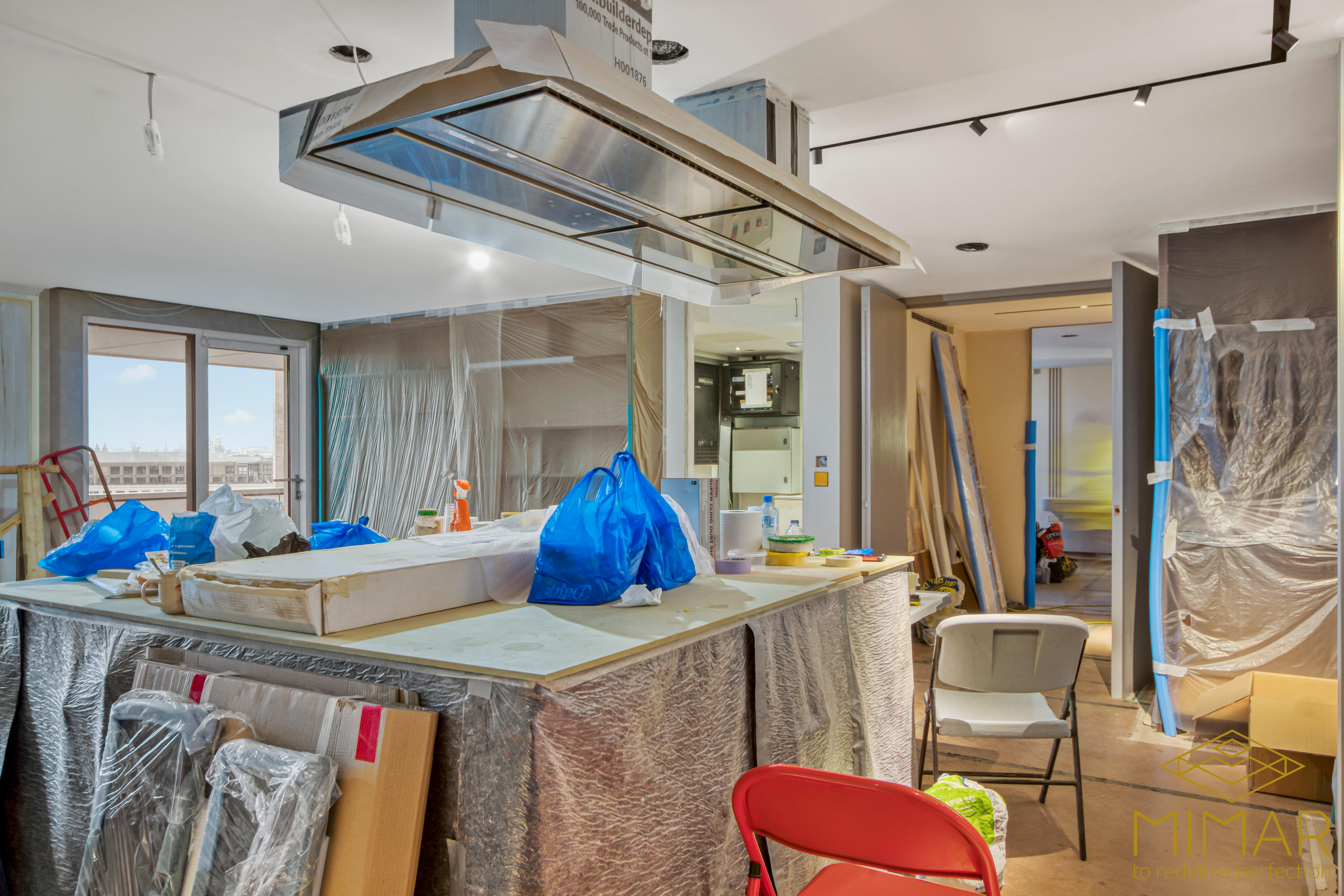
Structural and Design Complexity
Changes that involve moving walls, relocating plumbing, gas lines, or electrical systems significantly increase costs. Features like kitchen islands, breakfast bars, or specialized storage solutions also add to both material and labor expenses. Experts caution that moving plumbing fixtures even a short distance can add £1,000-£3,000 to your kitchen remodel cost. If you’re considering a truly bespoke kitchen with unique custom details, discover the art of creating handmade kitchens for functional beauty and lasting value.
Appliance Selection
Kitchen appliances represent a substantial portion of any renovation budget:
- Budget appliance package: £1,500-£3,000 (standard freestanding units)
- Mid-range appliance package: £3,000-£6,000 (quality branded appliances)
- Premium appliance package: £6,000-£15,000+ (high-end integrated systems)
The decision between standard and integrated appliances also affects cabinetry costs, as integrated systems require special cabinet construction.
Labour Costs and Geographical Location
Professional installation typically represents 20-30% of total kitchen renovation costs. London labour rates are notably higher than the UK average, with skilled kitchen fitters charging £250-£350 per day in the capital compared to £200-£250 in other regions. This London premium extends to materials as well, with delivery charges and supplier margins often higher in the capital. Navigating these regional and regulatory challenges is easier with informed guidance—see our expert resources on working with architects for refurbishments for advice on selecting professionals and securing permissions in London.
Understanding Kitchen Renovation Terminology and Costs
The terminology used to describe kitchen projects can sometimes be confusing, with terms like “renovation,” “remodel,” and “refurbishment” often used interchangeably. However, these terms can imply different scopes and costs:
| Terminology | Typical Cost Range (UK) | What It Typically Involves |
|---|---|---|
| Kitchen Refurbishment Cost | £5,000–£15,000 | Surface-level updates, repairs, and minor improvements without changing the layout |
| Kitchen Reno Cost | £6,000–£25,000 | Informal term covering various scopes from simple updates to more significant changes |
| Kitchen Remodel Price | £6,200–£50,000+ (London: £25,000–£75,000+) |
Comprehensive changes including potential structural modifications and layout alterations |
| Kitchen Renovation Price | £6,200–£60,000+ | Broad term encompassing projects of all scales from refreshes to complete transformations |
When discussing your project with contractors, be specific about your scope to ensure accurate cost estimates. Industry professionals recommend clarifying exactly what work is included in any quote to avoid misunderstandings about project scope. For best practice on clear and effective collaboration, read about how to communicate effectively between architect, client, and builder.
Typical Kitchen Remodel Cost Breakdown in London
To develop an accurate budget, it’s helpful to understand how costs typically break down across different elements of a kitchen remodel:
Cabinet and Storage Solutions (30-35% of total budget)
Cabinetry typically represents the largest single expense in most kitchen renovations. In London, costs range from:
- Stock cabinets: £3,000-£8,000 (installed)
- Semi-custom cabinets: £8,000-£15,000 (installed)
- Fully bespoke cabinets: £15,000-£30,000+ (installed)
The cabinet construction method, door style, material quality, and interior fittings all influence this cost significantly. Considering bespoke or handmade kitchens can offer both functional and aesthetic value that endures.
Worktops and Splashbacks (10-15% of total budget)
Worktop costs in London kitchen renovations vary dramatically based on material:
- Laminate: £800-£2,000 (installed)
- Solid wood: £2,000-£4,000 (installed)
- Quartz/Composite: £3,000-£6,000 (installed)
- Natural stone: £4,000-£10,000+ (installed)
Splashbacks add additional costs ranging from £300 for basic tiling to £2,000+ for glass or stone options.
Appliances (15-20% of total budget)
London kitchen renovations typically include:
- Cooking appliances: £800-£5,000+ (range cooker or separate oven and hob)
- Refrigeration: £500-£3,000+
- Dishwasher: £300-£1,500+
- Extraction: £200-£2,000+
- Specialty items: £500-£3,000+ (wine fridges, coffee machines, etc.)
Industry data shows that integrated appliances typically cost 20-30% more than freestanding equivalents but provide a cleaner, more cohesive aesthetic.
Fixtures and Fittings (5-10% of total budget)
This category includes:
- Sink and tap: £250-£1,500+
- Lighting fixtures: £300-£2,000+
- Cabinet hardware: £200-£1,000+
Quality fixtures can elevate even budget kitchen renovations, making this category particularly important for value-conscious renovators. When choosing new fittings, don’t overlook eco-friendly lighting and tap options for long-term efficiency and sustainability.
Flooring (5-10% of total budget)
For a typical London kitchen of 15m²:
- Vinyl/Laminate: £600-£1,500 (installed)
- Porcelain tile: £1,200-£2,500 (installed)
- Engineered wood: £1,500-£3,500 (installed)
Labor and Installation (20-30% of total budget)
Professional installation costs in London typically range from £5,000-£15,000 depending on complexity, including:
- Kitchen fitting: £3,000-£7,000
- Plumbing work: £500-£2,000
- Electrical work: £500-£2,500
- Plastering/decorating: £800-£2,000
Experts emphasize that while it may be tempting to cut costs on labor, professional installation is crucial for ensuring durability, safety, and warranty validity. Discover more about the roles of architects and professionals in successful London refurbishments for insights on project planning and maximizing quality.
Additional Considerations
Don’t forget to budget for:
- Demolition and waste removal: £500-£1,500
- Structural changes: £2,000-£5,000+ if moving walls
- Design fees: £500-£3,000+ for professional kitchen design services
Developing a Realistic Budget for Your Kitchen Remodel
Creating a workable kitchen renovation budget requires balancing aspirations with financial reality:
Assess Your Financial Capacity
Determine what you can comfortably afford, considering savings, home improvement loans, or releasing equity. Most financial advisors suggest limiting renovation costs to 5-15% of your home’s current value to ensure a reasonable return on investment. It is recommended to have open discussions with both your architect and contractor regarding the budget, as seamless collaboration fosters better results—see these tips on effective communication during renovations.
Research Current Market Costs
Kitchen refurbishment costs change over time. Recent industry data is essential for realistic budgeting, as material prices have seen significant fluctuations in recent years. To learn more about process steps and quality control measures, see how to put all the pieces of your project together.
Budget Kitchen Strategies Without Sacrificing Quality
For cost-conscious renovators, consider these approaches to create a beautiful kitchen on a tighter budget:
- Cabinet refinishing: Painting existing cabinets can save 70% compared to new units while still refreshing the space
- Partial replacement: Keep cabinet frames but replace doors and drawer fronts
- Open shelving: Replace some upper cabinets with less expensive open shelving
- Laminate worktops: Modern high-quality laminates convincingly mimic stone at a fraction of the cost
- Appliance prioritization: Invest in key appliances you use daily while selecting more budget-friendly options for less-used items
Kitchen specialists suggest that focusing investment on visible, high-impact elements while economizing on less noticeable components can create a premium look without the premium price tag. And if sustainability is part of your budget plan, use this eco-friendly refurbishment guide for material and appliance choice inspiration.
Include a Contingency Fund
Always reserve 10-15% of your total budget for unexpected issues. Industry professionals warn that older London properties frequently reveal hidden problems once work begins, from outdated wiring to structural issues that must be addressed.
Obtaining and Evaluating Quotes for Your Kitchen Renovation
Securing and comparing contractor quotes is a crucial step in kitchen remodel planning:
Prepare Detailed Project Specifications
Create a comprehensive document outlining all aspects of your project, including:
- Detailed measurements and layout plans
- Specific materials, brands, and models
- Scope of work (demolition, installation, finishing)
- Timeline expectations
This level of detail ensures quotes are comparable and comprehensive. For a smooth process, be sure to check planning requirements, builder certifications, and insurance coverage as outlined in the practical guide to refurbishment planning.
Obtain Multiple Quotes
Renovation experts recommend obtaining at least three quotes from reputable contractors. Look for companies with:
- Specific kitchen renovation experience
- Positive reviews and references
- Appropriate accreditations and insurance
- A portfolio of similar projects
Engaging with an architect early in this process can streamline your project, ensure quality, and help you navigate permissions—see the benefits in working with architects for refurbishments.
Evaluate Kitchen Remodel and Cost Transparency
When reviewing quotes, look beyond the bottom line:
- Itemization: Ensure each component is separately listed with associated costs
- Specification detail: Check that material grades and brands are clearly stated
- Exclusions: Identify what’s not included that might require additional budget
- Payment schedule: Verify the deposit amount and subsequent payment milestones
Industry experts caution that the cheapest quote isn’t necessarily the best value, as quality workmanship and proper project management significantly impact the final result and long-term satisfaction. Building strong communication with your chosen professionals is just as important as the numbers—learn about effective architect-client-builder communication for your renovation.
Prioritizing Your Spending: Where to Save and Where to Splurge
Strategic allocation of your budget maximizes both immediate satisfaction and long-term value:
Investment Priorities
Consider allocating more of your budget to these high-impact elements:
- Quality cabinetry: As the most visible component that receives daily use, well-constructed cabinets with quality hardware ensure longevity
- Durable worktops: Since these surfaces endure constant use and impact kitchen functionality, investing in quality materials prevents costly future replacement
- Reliable appliances: Focus on energy efficiency and performance for items used daily (refrigerator, oven, hob)
- Professional installation: Expert fitting ensures everything functions properly and looks polished
If you are considering bespoke work, prioritizing handmade, custom kitchens can bring exceptional value, uniqueness, and longevity to your home while reflecting your style.
Areas to Consider Economizing
These aspects typically offer opportunities to reduce kitchen renovation costs without significantly impacting quality:
- Cabinet interiors: Standard cabinet boxes behind quality doors can look identical to all-premium construction
- Less visible appliances: Standard models for less-frequently used items
- Backsplash alternatives: Ceramic tile instead of glass or stone
- DIY finishing work: Painting, simple tiling, or hardware installation for those with basic skills
Smart Investment Tip
Focus your investment on permanent, difficult-to-replace elements while economizing on items that can be easily upgraded later as budget allows.
Managing Kitchen Renovation Costs Throughout Your Project
Active cost management during your kitchen remodel helps prevent budget overruns:
Create a Detailed Tracking System
Develop a spreadsheet that records:
- Original budget for each category
- Actual expenditures as they occur
- Variances between planned and actual costs
- Remaining contingency funds
Review this tracker weekly to identify potential problems early. For further guidance on keeping your project on course, proper scheduling, and quality checks, read Practicalities: Putting the Pieces of Your Project Together.
Manage Changes and Variations
Change orders are a common source of kitchen renovation cost increases. To control these expenses:
- Require written quotes for any changes before approving
- Understand both the direct and consequential costs of modifications
- Consider offsetting new expenses by reducing scope elsewhere
London renovation specialists note that mid-project design changes typically cost 25-40% more than if they had been included in the original plan, making thorough initial planning financially crucial. For advice on maintaining strong team communication and handling scope changes gracefully, review communication strategies for architects, clients, and builders.
Phased Implementation for Budget Kitchen Remodels
If budget constraints are significant, consider a phased approach:
- Phase 1: Address layout, plumbing, electrical, and essential cabinets
- Phase 2: Upgrade appliances and worktops
- Phase 3: Complete aesthetic elements like backsplash and lighting fixtures
This strategy allows you to spread costs while ensuring foundational elements are properly addressed. Leveraging architect-led project management can help you orchestrate phasing effectively—see benefits of working with architects on refurbishments.
Addressing Unexpected Issues
When surprises arise, as they often do in London’s older properties:
- Get multiple solutions and quotes for addressing the problem
- Understand which issues affect compliance and safety versus those that are primarily aesthetic
- Consider whether addressing the issue now prevents more expensive repairs later
Kitchen renovation experts emphasize that proper investigation before work begins can identify many potential issues, but some problems inevitably only become apparent once walls or floors are opened. When unexpected issues arise, clarity and open dialogue are essential—discover tips in effective communication among architect, client, and builder.
Conclusion: Taking the Next Steps in Your Kitchen Remodel Journey
Planning your kitchen remodel around a realistic understanding of costs is the foundation for a successful renovation. By thoroughly researching kitchen refurbishment cost factors, creating a detailed budget that reflects your priorities, obtaining comprehensive quotes, and actively managing expenses throughout the project, you can achieve a kitchen that balances your design aspirations with financial reality.
Remember that kitchen renovation costs in London reflect the unique challenges and opportunities of renovating in the capital – from higher labor rates to the premium placed on quality design in the property market. A thoughtfully planned kitchen remodel represents not just an improvement to your daily living but a sound investment in your property’s long-term value. For more inspiration and tailored advice, explore these expert kitchen remodeling tips from London specialists.
As you move forward with your kitchen renovation plans:
- Define your specific goals and priorities
- Research current costs for your desired scope
- Develop a realistic budget with appropriate contingency
- Seek detailed quotes from qualified professionals
- Create a system for tracking and managing expenses
With careful planning and informed decision-making, your kitchen remodel can deliver exceptional results within a budget you’re comfortable with – transforming not just your cooking space but your entire home experience. For comprehensive guidance from planning and permissions to effective teamwork and sustainable choices, don’t miss our articles on project practicalities, communication between architect, client, builder, and working with architects for successful refurbishments.

